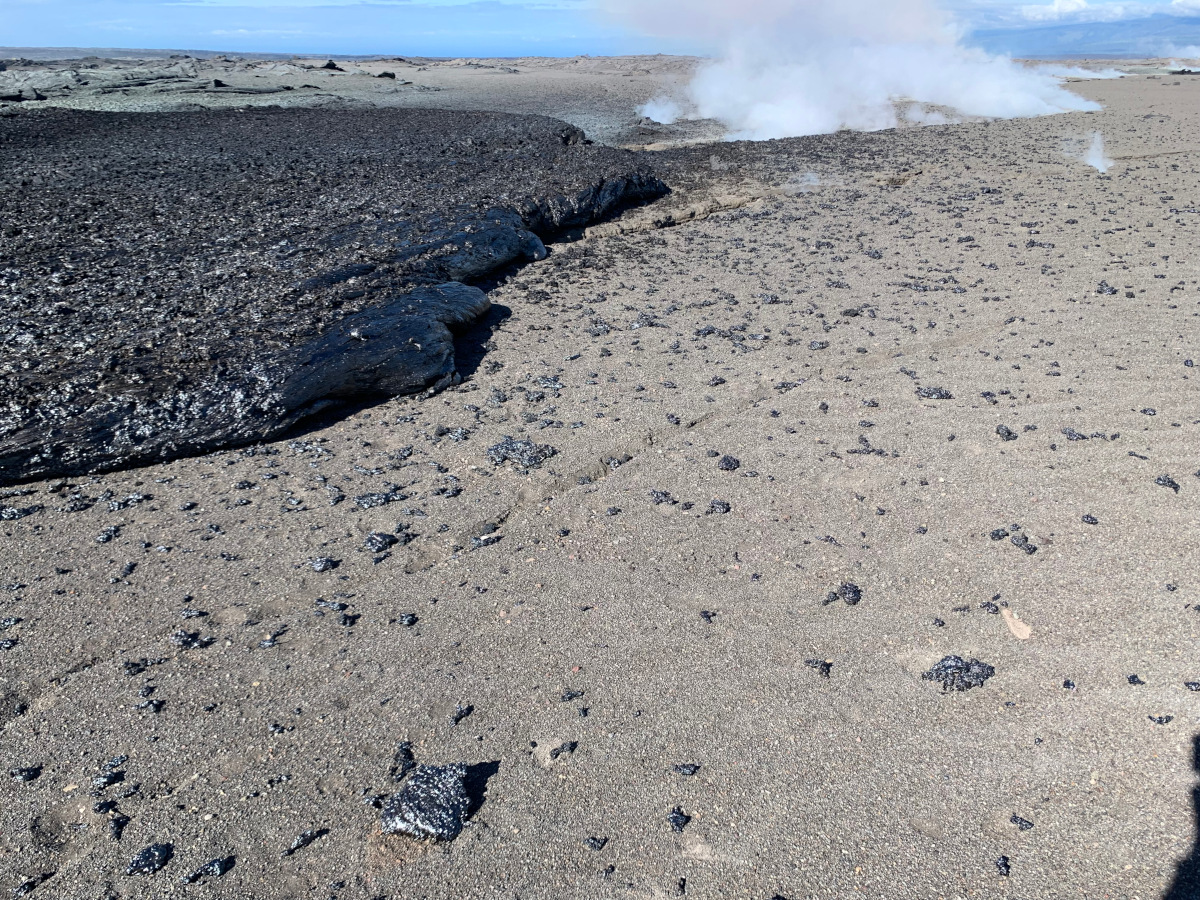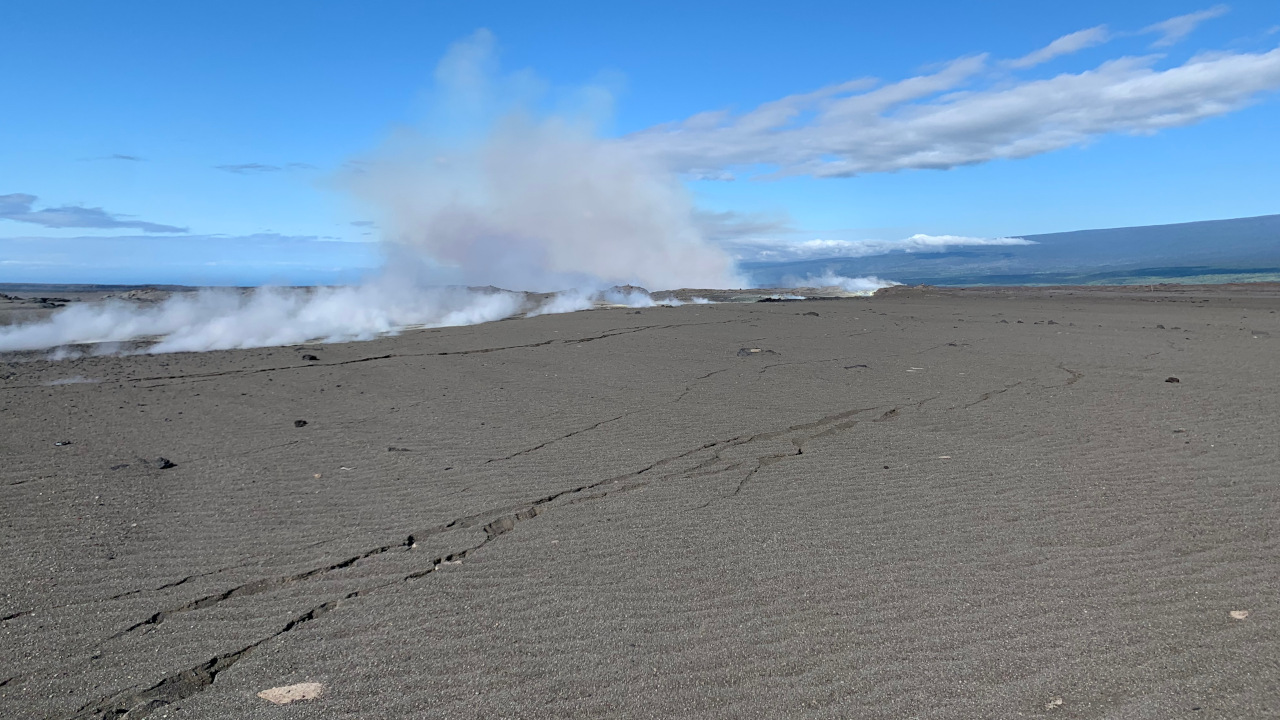(BIVN) – The new eruption of Kīlauea volcano has paused, only 12 hours after active lava emerged to the southwest of the summit within Hawaiʻi Volcanoes National Park.
The current USGS Volcano Alert Level for Kīlauea remains at WATCH, and scientists say “activity in this region remains dynamic and could change quickly.”
The Kaʻū Desert area in Hawaiʻi Volcanoes National Park remains closed due to eruption hazards, including Hilina Pali Road, Kulanaokuaiki Campground, Maunaiki Trail, and backcountry areas. Officials say that it “is unlikely a night-time glow” will be visible in the park this evening due to the pause in the eruption.
From the USGS Hawaiian Volcano Observatory status report issued just before 3 p.m. HST:
Visual observations suggest that effusion of lava ceased by approximately 12:30 p.m. HST today. Lava flows were sluggish between 11–12 p.m. HST and had ceased moving by approximately 12:30 p.m. HST. However, areas of incandescence and elevated volcanic gas emissions continue. At approximately 7:45 a.m. HST this morning, a sulfur dioxide emission rate of approximately 15,000 tonnes per day was measured; this emission rate had decreased to 12,000 tonnes per day as of noon and has likely decreased further this afternoon. Volcanic tremor, a signal associated with fluid movement, continues to be recorded on summit seismometers though at a slightly decreased intensity.
Earthquake activity decreased greatly in the summit region of Kīlauea with the onset of the eruption. All seismicity for the last 8 hours is concentrated near Maunaiki at the western extent of the system of cracks that opened during this eruption. Ground deformation has been characterized by slow summit deflation since 2 a.m. HST, suggesting that magma may still be moving from summit storage to the southwest into the eruption area.

USGS: “Frothy, glassy fragments of lava from the fountains of Kīlauea’s June 3 eruption fissures were found scattered around newly-erupted lava flows. These tephra contain valuable geochemical information about the magma which fueled the eruption.” (USGS image by D. Downs)
Fissure eruptions are often short-lived but can be difficult to forecast. They can display pauses of hours to days. The large crack system developed during the past day extends well past the westernmost active fissure, indicating that magma has been emplaced shallowly all the way to the east side of Maunaiki, where the most recent earthquake swarms are occurring. While the eruption today occurred due to the intrusion of new magma to the Southwest, it occurred in the vicinity of the dike that formed close to the surface on January 31, 2024. Continued input of newer, hotter magma could destabilize the stored magma. While the current eruption may be over, it is equally likely that it might resume at or to the west of the last active fissure.
HVO continues to closely monitor Kīlauea, which remains at alert level/aviation color code WATCH/ORANGE. HVO will issue a Kīlauea daily update tomorrow morning. If activity changes significantly before then, another Volcano Activity Notice will be issued.
The Hawaiʻi Department of Health noted that air quality levels “are slightly elevated at the Pahala and Nāʻālehu air quality monitoring stations”, and that vog conditions, as well as the presence of sulfur dioxide (SO2) in the air, “may increase and fluctuate in various areas of the state.”


by Big Island Video News4:36 pm
on at
STORY SUMMARY
HAWAIʻI VOLCANOES NATIONAL PARK - Scientists say that while the current eruption may be over, it is possible that it might resume at or to the west of the last active fissure.